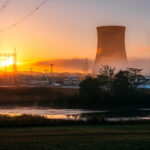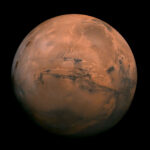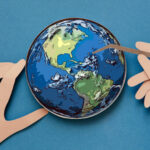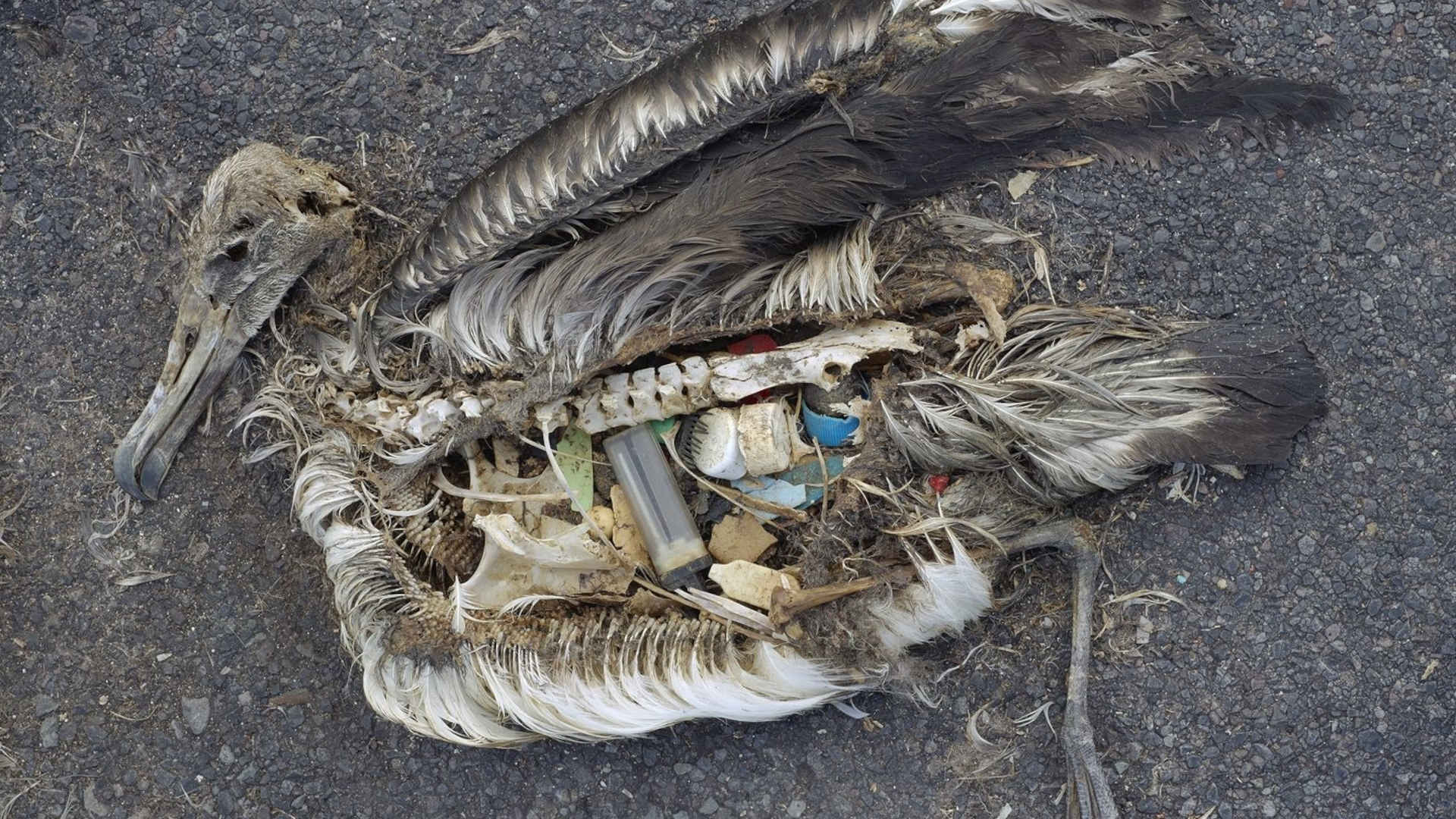The mahi-mahi the crew hauled in looked spectacular, its bright, shining body of yellow and green, dotted with radiant blue speckles and topped with a long dorsal fin from head to tail. Its fate was the ship’s oven, where the fish — common in Hawaiian waters — would be grilled to feed a hungry team of sailors.
In the mahi-mahi’s stomach, the sailors found a flying fish, which in turn had eaten small spheres that looked like fish eggs. Squeezing them out of its body, the crew discovered this was stuff of a much more synthetic nature: plastic. Not exactly a tasty addition to the menu.
In her first book, “Thicker Than Water: The Quest for Solutions to the Plastic Crisis,” environmental journalist Erica Cirino uses this anecdote to reveal just how deeply plastic has worked its way into the food chain. She tracks the story of plastic pollution — from the creation of synthetic polymers in the 19th century and the discovery of their polluting side effects in the 1970s, to today’s plastic crisis, covering the entire life cycle of the material, from extraction and production to use and disposal.
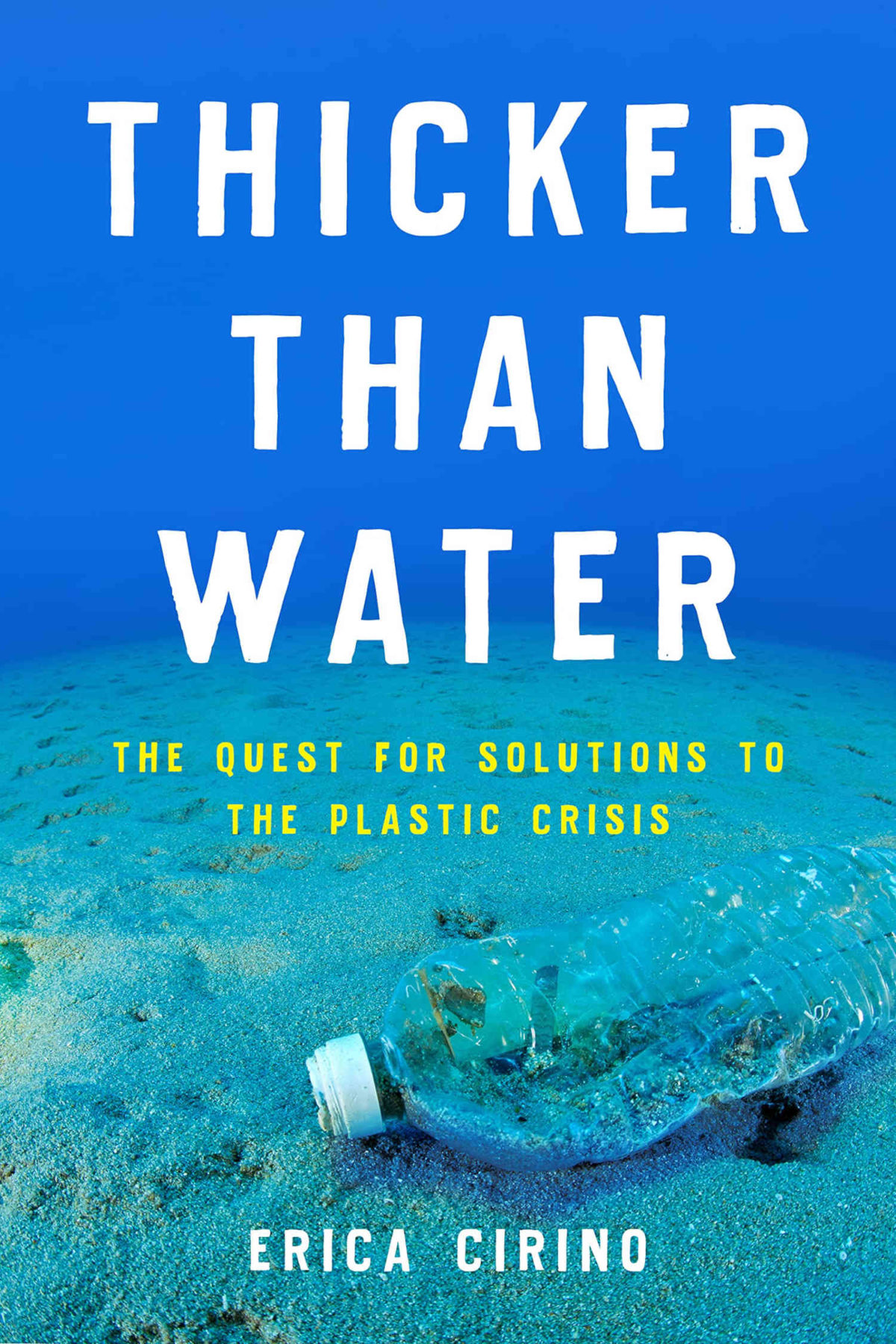
BOOK REVIEW — “Thicker Than Water: The Quest for Solutions to the Plastic Crisis,” by Erica Cirino (University of Chicago Press, 264 pages).
It’s still a matter of ongoing research how much plastics end up in our waterways, but estimates show that it’s in the range of millions of tons per year. It’s not only fish that bear the burden of our trash, we now know. More than 900 marine species ingest ocean plastic or get entangled with it, including whales, seals, turtles, and fish. Research shows that even small creatures like corals, plankton, and microbes interact with the remnants of our throwaway society. Some calculate that 90 percent of seabirds swallow plastic at some point during their lifetime. And that’s just the oceans. The ecosystems of rivers, lakes, the air, and the soil are polluted with visible trash as well as microplastics — and possibly even nanoplastics, which are in the same size-range as viruses.
In the course of her investigation, Cirino presents a wealth of facts and figures, knowns and unknowns, and takes a critical, comprehensive look at possible solutions, from clean-up and bioplastics to recycling and politics. She gives a detailed account of how science tries to understand the issue. But she also situates the plastic problem in a larger context, demonstrating the environmental injustices that plastics inflict on communities and countries that are in the vicinity of production plants, or receive the pollution and the cheap trash richer countries want to get rid of — injustices with a long history.
Cirino begins her five-year journey in Los Angeles, boarding a sailboat bound for the Great Pacific Garbage Patch, the infamous area between Hawaii and California where bits of plastics and other trash accumulate in what some have called a “plastic soup.” As the small crew of sailors and scientists sample the water for plastics, Cirino documents their research. In this nearly windless area, miles away from shore, the sailors encounter daily fleets of trashed plastic products, and when they skim the water with their manta trawl — also used to sample for plankton — they find small pieces of plastic in it.
After losing both the ship’s engine and rudder, the crew manages to arrive in Hawaii, joining environmentalists on the infamous trash-laden Kamilo Beach on the Big Island of Hawaii.
Later in the book, Cirino sails through Icelandic waters, home to huge whales and tiny plankton; investigates the microplastic pollution in the Great Lakes; watches researchers meticulously clean and analyze plastic bits in their labs; visits the communities and activists living near plastic production plants in Louisiana’s notorious “Cancer Alley”; and goes to Thailand, a global dumping ground for the cheapest, dirtiest plastics. She also explores the health implications of plastics and their additives in the human body.
Support Undark MagazineUndark is a non-profit, editorially independent magazine covering the complicated and often fractious intersection of science and society. If you would like to help support our journalism, please consider making a tax-deductible donation. All proceeds go directly to Undark’s editorial fund. |
At the same time, Cirino offers an engaging peek into the emerging field of plastic pollution research — a field that kickstarted in the early 1970s with a handful of studies, then stalled — and from the mid-1980s became subsumed under the umbrella term “marine debris.” It wasn’t until the late 1990s and early 2000s that the issue gained widespread public attention, when the Great Pacific Garbage Patch was discovered and scientists found beaches with grains of microplastics ground up in the sea and washed back on the shore.
In the past 20 years, the number of research projects and studies has vastly risen, along with the rise in plastic production. The research field is still in the process of establishing standard procedures and definitions. Sailors, scientists, activists, and concerned citizens and innovators with high-flying ideas have all contributed to the current body of knowledge — which is still full of open questions, among them: Exactly how harmful and disruptive are plastics?
Plastic, Cirino maintains, is just a very visible symptom of a wider systemic problem: the emergence of a society that’s lost touch with what’s around it and forgotten what it can’t live without. Biodiversity loss, climate change, pollution, and many other accelerating factors of global change, she demonstrates, are combining to exert immense pressure on species, ecosystems, and in the end, us.
As in the award-winning 2020 documentary “The Story of Plastic,” Cirino traces the human implications of the plastic crisis: a system of environmental racism and global injustice that puts the burden of pollution on underserved communities and people living in poverty and places with loose regulations and controls. The consequences of environmental crises like plastic pollution might hit everyone at one point eventually, but they aren’t distributed equally. Instead, she reveals, they are an integral part of an unjust system.
The history of plastics contains two interesting, parallel stories. One is that plastics were part of a phase of human progress — one that’s still active — that strove to defeat and dominate nature. “Plastic, the poster-child material of industrialization, was created to defy nature, to game the ephemerality of life,” Cirino notes.
The other story is that plastics also helped to save animal lives — just like fossil fuels did. Before coal and oil were used to light lamps and houses, oil from whale blubber did the job. Before billiard balls and combs were made out of plastic, elephants had to give their tusks and turtles their shells for humans to make them. Plastics have also played a crucial role in medicine, helping save human lives. But the age of fossil fuels, which included plastics, came with consumerism, a throw-away lifestyle and huge long-term downsides, including climate change, pollution, and much more. And it amplified the injustices established by colonialism and racism.
Cirino’s timely book draws all these threads together in an engaging fashion, whether she’s reporting at sea or in labs or from the frontlines of the people affected — the so-called “fenceline communities” living near petrochemical plants. Her writing is often strikingly evocative, as when, during an early-morning shift on board of her Pacific cruise, she notes the spectacle of colors in the dawn sky and the rhythmic sound of boat. “The smooth phsssssh-phssssh-phssssh of the steel hull cutting through gentle waves; the repetitive pa-pa-pa-pa-pa-pa-pa of the sails flapping every time the wind died down or changed direction; the rattling clink-clink-clink-clink-clink of the mainsail shackles on the tall aluminum mast.” But then her revery is interrupted by a shipmate pointing out a sun-bleached plastic fish crate floating by.
It’s immersive moments like these that make “Thicker Than Water” so distinctive beyond the litany of grim statistics and accounts of plastic pollution and its impacts across the globe. Cirino reveals a mindset in which listening, close observation, collaboration, and empathy coexist with the hard truths of her reporting.
Nowhere does this become as clear as when the mahi-mahi, the majestic fish the crew catches on the boat, is slaughtered. Cirino, a trained wildlife rehabilitator, doesn’t look away. Instead, she documents this moment of cruelty, and shares her pain for the loss of a living creature. “Out there,” she writes, “I learned, life is beautiful and wild and painful, and in its pure rawness, the sea has the potential to reveal the truth. The sea can show us what it is in life we need, and what we can live without.”
Anja Krieger writes and creates podcasts about plastic pollution and biodiversity. A graduate of the Knight Science Journalism Program at MIT and a decade-long reporter and audio producer for German national public radio, she now works as a science editor for the Helmholtz Climate Initiative in Berlin, Germany.




